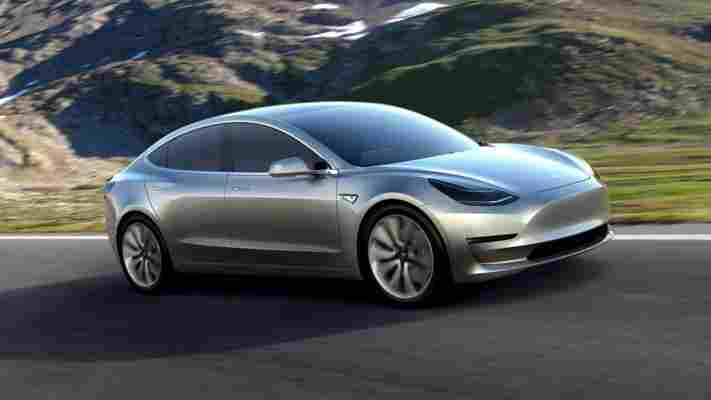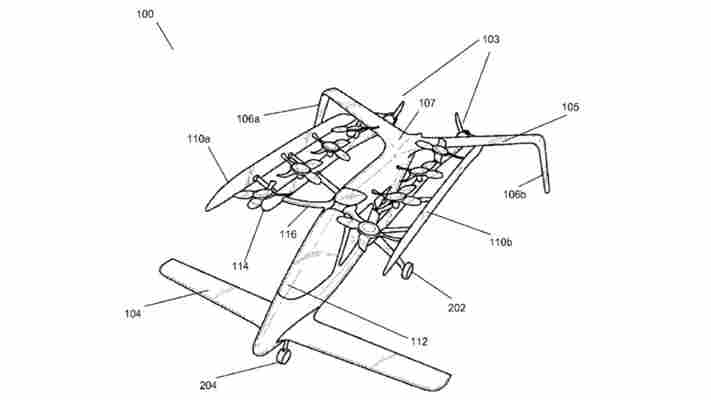Self-driving cars need one killer feature to prevent fatalities
New research on traffic incidents in the US published in the American Journal of Epidemiology showed that the availability of Uber’s on-demand cab service had no association with the number of subsequent traffic fatalities – contrary to what Uber-funded non-profit group Mothers Against Drunk Driving would have you believe.

That’s a sad reality we all have to live with at present. But forward-thinking car companies like Tesla want us to believe that there’s hope: Once they arrive, autonomous vehicles will be able to whisk us to and from our destination without the need for us to even touch the steering wheel.
Sounds great, right? There’s just one small problem though: Noli Brazil and David S. Kirk, the authors of the aforementioned research are of the opinion that Uber doesn’t decrease drunk driving deaths because most people who are under the influence are unlikely to make better decisions even when a safe option is available.
That means there’s a chance that inebriated folks who are considering driving drunk will still want to do so, even if their cars have the ability to navigate to their destination autonomously.
Current Teslas have a beta version of the company’s Autopilot feature on board, but the cars still allow drivers to take over control of the vehicle at any time they choose. It’s safe to assume that this is the setup most cars will offer for at least a few years after self-driving cars become widely available.
Sure, the number of fatalities caused by drunk drivers in autonomous vehicles might certainly be lower than today’s figures. But if we hope to stamp out such incidents altogether, we need to think about ways to prevent people from driving drunk in the first place.
What might help is a breathalyzer located on the dashboard that’s engaged when your vehicle detects that you’re stopping off at a bar or if you’re returning to the driver’s seat late at night. If the car senses that you’ve had one too many, it simply won’t allow manual control; instead, it could suggest a preset list of destinations that it can take you to, like your home or the hotel you’re staying at that night.
This will likely become even less of a problem as more and more vehicles gain self-driving capabilities and can communicate with each other to avoid collisions – but until then, there certainly needs to be a way to use modern technology that’s becoming increasingly available to prevent drunk driving.
What I learned about the future from playing Minecraft VR
It’s safe to say I’ve spent a fair amount of time playing Minecraft . At this point — knowing that it’s one of the most popular game titles in all of earth’s history — I don’t feel like I’m in the minority here. But at the Xbox Spring Showcase in San Francisco, I finally got the chance to enter the block-based world with the aid of the Oculus Rift and I felt like a whole new style of gameplay unfolded before my eyes.

I also felt nauseous, but we’ll get to that in a minute.
Minecraft is one of the jewels in the world of VR, and Minecraft for Windows 10 will be able to support VR, with aid from the Microsoft Xbox controller included in any pre-order, practically out of the box for those waiting patiently for their commercial Rift at the end of the month. Microsoft said support would be available sometime in the Spring, so it’s likely that this will be one of the high-quality inaugural experiences VR fans are hoping to chase after.
And it’s exactly what you should be playing.
For the very small amount of readers who are unfamiliar with Minecraft, the core principle of the game is that: mining and crafting. But once you begin to mine and craft — as well as hunt, fish, cook, built and a host of other things — a world of possibilities opens up in front of you. It’s easy to be immersed in that world mentally, but with the aid of VR, you also feel immersed physically .
As you can see in my demo video, I began with a pseudo “living-room” type experience designed to be the intermediary between IRL console playing and the VR world. It’s a step I would highly recommend for out-and-out beginners who haven’t felt the weight of a Rift (or similar VR device) on their face for a prolonged period of time.
The living room experience is gentler on your eyes and your inner ear, and I was particularly fascinated with a neoclassical portrait featuring the beloved Minecraft pig.
I didn’t stay in that room for long, though, and dove head first into living in the Minecraft world itself. It’s a tricky feat orienting yourself within the virtual world. Although Minecraft is familiar and its movement speeds work forgivingly with VR, it can be hard to position your face and body in relative space near your computer.
I flipped and flopped and looked around all over the dang place, largely because I find it more comfortable on my vision to do it myself rather that repeatedly correct my center of vision with the Xbox joystick.
So, if you were hoping VR didn’t make you look like a silly fool while playing it, forget it.
But when I forgot about the thing on my face and the controller in my hand, I felt like I was actually living in Minecraft. I dug for coal, battled enemies, and said hello to a group of rabbits. I watched all of the amazingly beautiful and intricate machines the team at Mojang built for the demo. I also got to have a little roller-coaster experience on a mine cart.
Then the fatigue set in.
It’s normal when experiencing VR the first few times for your eyes to get tired. Humans (and many animals) don’t have to turn their whole faces to look at an object — we scan an object with our eyes. Compensating for the lack of recognition for subtle eye movements means whipping your head around to get a clear view of objects.
Additionally, sensations of motion can wreak havoc on your body and you try to reconcile the motion you see without any of the associated feelings. When I rode the cart, I felt my stomach lurch — but not in the right way.
I left the 12-minute demo excited about the world of VR, and also horrifically nauseous. The folks at Oculus were considerate of this fact — having ginger candies close by to settle the stomach — but it was a sensation that lasted the better part of a day.
That said, I’m excited to see how this kind of play evolves, especially as Oculus and its competitors move away from joystick controllers and towards more natural-motion devices. There’s a lot of room for VR to grow and it has a lot of potential uses. As developers become more savvy in bringing quality content to these new devices, I think there is a possibility that it could blossom into a new way to experience media we’re so familiar.
And if you love Minecraft, even with all of its hiccups, this might be the best way to play.
Google’s Larry Page is pitting two startups against each other in a race to build flying cars
Between two-legged robots , tech for cities of the future and self-driving cars , Google’s parent company Alphabet certainly has its fingers in many gee-whiz pies. Bloomberg Businessweek reports that its leaders’ ambitions don’t stop there.

The publication’s new piece reveals that, for years, Google co-founder Larry Page, has been quietly funding two startups that are working on developing flying cars, which can take off vertically and transport an individual to their destination by zooming through the skies.
To be clear, it’s more accurate to describe these as electric personal aerial vehicles. Page has funded Zee.Aero with more than $100 million since 2010 and another firm named Kitty Hawk since last year. And while both are working on vastly different designs, the end goal of personal aviation is the same.
Zee.Aero’s office is located right next to Google’s headquarters in Mountain View. In its six years of existence, it has expanded into an aircraft hangar in Hollister and currently employs 150 people who have cut their teeth at NASA, SpaceX and Boeing.
It’s said to have worked on a patented design proposed by Stanford aeronautics and astronautics professor Ilan Kroo, but has now moved to two other prototypes, that workers at the Hollister airport describe as having ‘a narrow body, a bulbous cockpit with room for one person upfront, and a wing at the back.’
The team at Kitty Hawk, the younger of the two firms, is comprised of veterans from Zee.Aero and Google’s experimental ventures. According to Bloomberg’s sources, it’s working on ‘something that resembles a giant version of a quadcopter drone.’
It’ll be interesting to see if either firm can make the collective dream of tech enthusiasts come true. Of course, Page’s companies also have other rivals to worry about, including Chinese firm Ehang , which unveiled its passenger drone at this year’s CES and secured clearance to begin testing it in Nevada this year.
